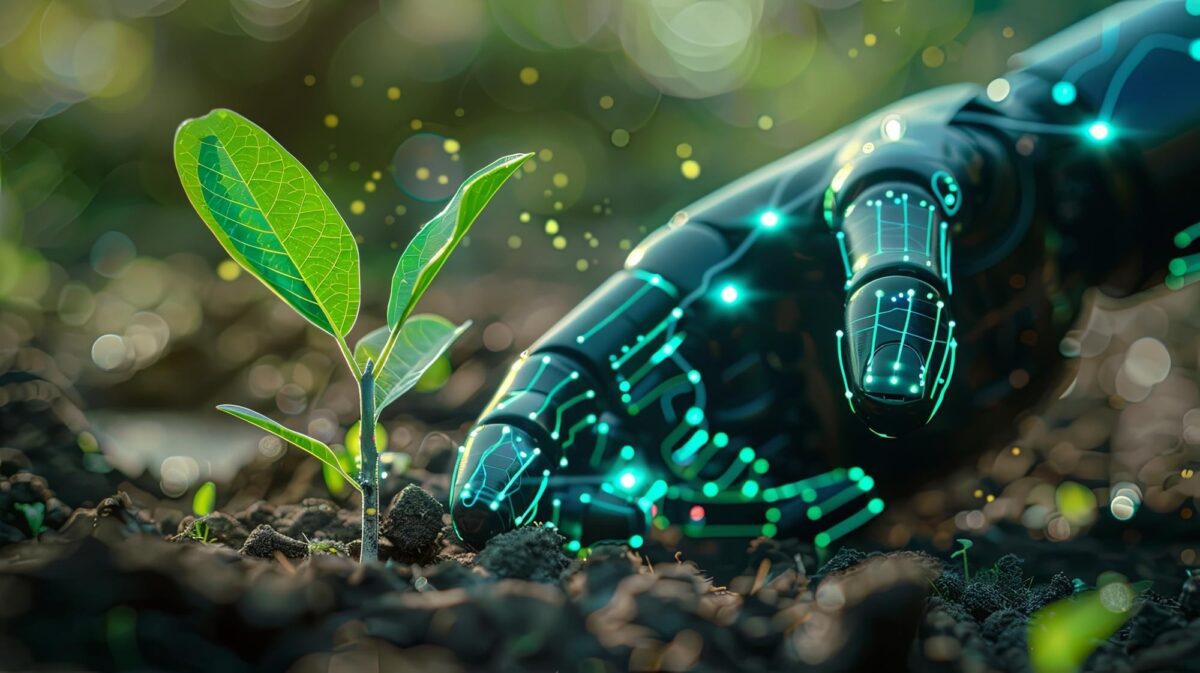The World Between 2024 and 2035: A 10-Year Prediction of Future Agriculture

What are the next 10 years going to be like? Well, in this episode, we’re going to take you through a detailed timeline of what we think is going to happen by 2035 in the field of agriculture. This year, we saw the first Apple headset called Vision Pro, capable of augmented reality (AR) and virtual reality (VR). We also witnessed GPT-4o, which can perform live translations and multimodal tasks. Global carbon emissions have peaked, and renewable energies are being adopted at a record rate.
The next year promises major advancements in artificial intelligence. We can expect Tesla to unveil their highly dexterous Optimus Gen 3 robot with 22 degrees of freedom in its hands, and both OpenAI and Google are likely to announce powerful new large language models with capabilities approaching up to 20 percent of the human brain. Additionally, we expect significant progress in on-device AI software, bringing real-time assistance and information directly to users’ smartphones.
As we move from 2024 to 2035, the world will witness groundbreaking advancements and transformative changes across various sectors, driven by rapid technological progress. This period promises significant developments in AI, energy, agriculture, and societal structures, paving the way for a future that is both promising and challenging. Now, let’s explore how these technological advancements will transform agriculture over the next decade.
2024-2025: The Advent of On-Device AI and Enhanced Search Engines
By early 2025, on-device AI software will become widely available, offering users real-time assistance directly on their smartphones. This technology will provide instant access to information and services, revolutionizing how we interact with digital devices.
Towards the end of 2025, AI integration will overhaul major online search engines. These AI-powered systems will offer curated search results and advanced functionalities, including the ability to search through videos, photos, and documents seamlessly. Platforms like TikTok and Facebook will adopt video AI, allowing users to pinpoint specific moments within videos effortlessly.
AR technology which augments your surroundings by adding digital elements to a live view, often by using the camera on a smartphone and VR which provides a completely immersive experience that replaces a real-life environment with a simulated one advancement will be greatly advanced. In the developed world, AR will transform how farmers manage their fields. Farmers will begin utilizing AR overlays to view real-time data on crops, allowing for swift action against deficiencies, pests, or diseases. AR will also enhance training by creating interactive programs where new farmers can practice techniques virtually before applying them in real life. On the other hand, VR will play a role in farm design. Farmers will be able to create virtual models to experiment with layouts and infrastructure, optimizing their farms for efficiency. VR experiences will even allow remote management, enabling farmers to virtually visit their fields for monitoring or training purposes. Ultimately, AR and VR will usher in an era of informed decision-making, improved efficiency, and enhanced education within agriculture, creating a more sustainable and transparent food system for consumers.
2026: The Rise of Autonomous Systems and Digital Financial Transformation
In 2026, the impact of AI on the job market will become evident, with an estimated 5 million jobs being displaced. This shift will lead to reduced working hours and potential backlash as industries adapt to increased automation.
Autonomous tractors and robotic harvesters will become more common on farms. These machines, equipped with AI-driven decision-making capabilities, can operate 24/7, significantly enhancing productivity and reducing the reliance on manual labor. In developing regions, the adoption of such technologies will require infrastructural improvements and financial support, but pilot programs show promising results in increasing efficiency and reducing costs.
In this period, AI-Driven Supply Chains will be advanced and AI will begin to revolutionize the sector. Predictive analytics help farmers and distributors anticipate demand more accurately, reducing food waste and improving profitability. Blockchain technology ensures transparency and traceability from farm to fork, building consumer trust and enabling better food safety management. Developing countries benefit from these innovations by integrating local markets into global supply chains, ensuring fair prices and reducing losses.
The financial sector will undergo significant digitization, with cryptocurrency gaining prominence. Companies and workplaces will increasingly adopt cryptocurrencies, integrating them into their financial operations. Additionally, AI will enhance agricultural supply chains, improving efficiency and profitability through predictive analytics and blockchain technology.
2027: Breakthroughs in Energy and Autonomous Stores
The year 2027 will mark a major milestone in energy production, with the first commercially viable net energy production from nuclear fusion. This breakthrough will revolutionize industries, including agriculture, by providing a sustainable and abundant energy source.
Solar perovskite materials will also become commercially viable, leading to the widespread use of thin solar films on windows and roofs. The rise of autonomous stores will transform retail, with companies like Amazon and Target implementing fully autonomous food shopping experiences across the U.S. and Europe.
2028: Achieving Artificial General Intelligence and Cultured Meat Adoption
By 2028, humanity will achieve Artificial General Intelligence (AGI), with AI systems matching or surpassing human cognitive abilities. This advancement will revolutionize various fields, from education to industry. The education sector will experience a transformation, with AI tutors replacing traditional universities and colleges, leading to a surge in online education and a more efficient learning process.
As the effects of climate change become more pronounced, biotechnology will play a crucial role in developing climate-resilient crops. By 2028, advancements in genetic modification and CRISPR technology will lead to the creation of crops that can withstand extreme weather, pests, and diseases. This innovation is critical for developing countries, where agriculture is highly vulnerable to climate variability, ensuring food security and supporting sustainable agricultural practices.
Additionally, cultured meat will enter the mainstream, becoming a widely accepted and commercially viable alternative to traditional meat. This innovation will reduce the environmental impact of livestock farming and lead to a decline in animal agriculture by 2030.
2029-2031: Sustainability and Technological Integration
By 2030, smart irrigation systems and water management technologies will become essential, addressing water scarcity and enhancing agricultural productivity. Over 90% of the global population will be literate and have internet access, bridging educational and digital divides.
AI-enhanced crop breeding will accelerate the development of resilient and high-yielding crop varieties, supporting food security and sustainable agriculture practices. The integration of renewable energy sources into farming operations will become standard, reducing reliance on fossil fuels and promoting environmental sustainability.
2032-2034: Societal Shifts and Quantum Computing
The early 2030s will see significant societal changes, with the first trillionaire emerging by 2032. The workforce will shrink by 2 billion people due to widespread automation and AI, leading to increased adoption of Universal Basic Income (UBI) and Universal Basic Services (UBS). Humanoid robots will become commonplace, performing manual labor tasks across various industries.
The year 2034 will introduce general-purpose quantum computing software for everyday tasks, further revolutionizing technology use in homes and offices. Climate refugees will become a pressing issue, necessitating global cooperation and support.
The coming decades hold immense potential for both positive and negative developments, making them a critical juncture in human history. Despite the negativity surrounding current events, I believe advancements in science and technology offer a compelling reason for optimism. Just as we’ve historically used innovation to overcome challenges, so too can we navigate the future successfully by continuing to be resourceful and leveraging the tools we create.



